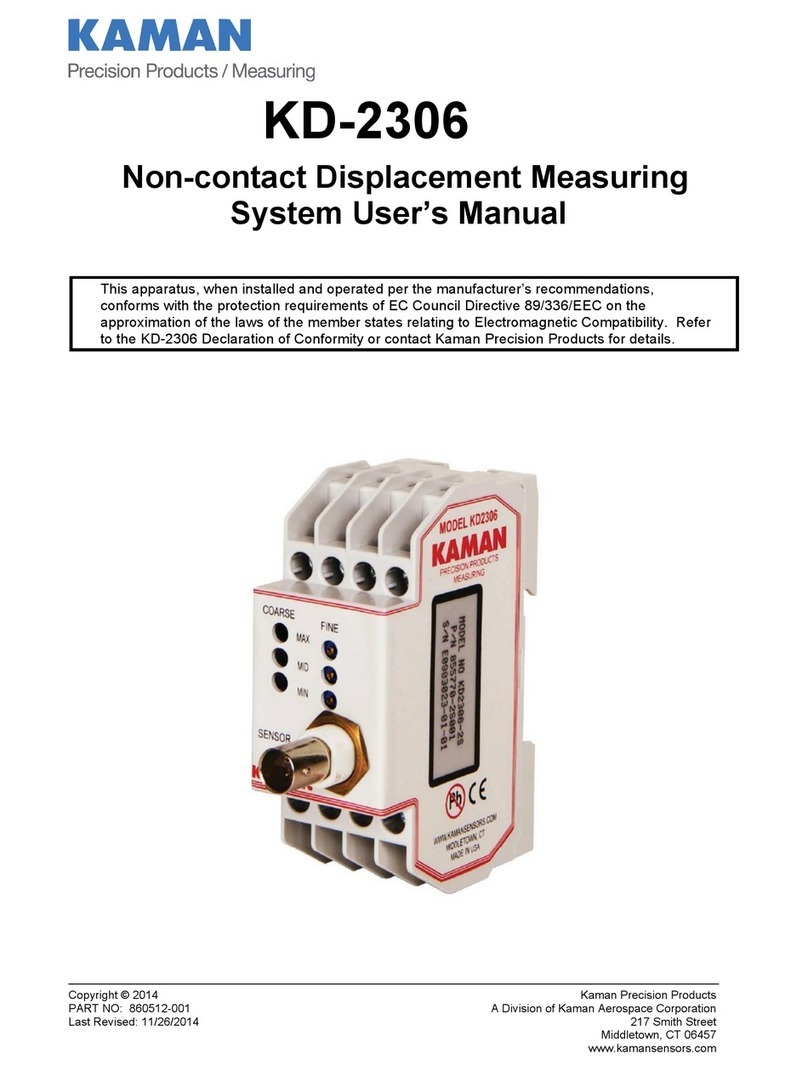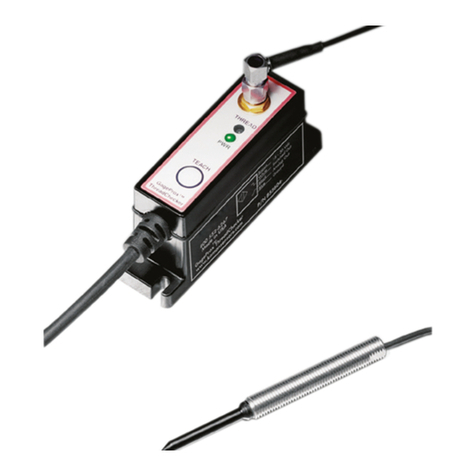
www.kamansensors.com 2 PART NO: 860029-001
Last Revised 01/06/15
1.0 INTRODUCTION...................................................................................................... 4
2.0 THEORY OF OPERATION...................................................................................... 5
3.0 OPTIMUM PERFORMANCE ................................................................................... 6
4.0 APPLICATION INFORMATION............................................................................... 7
5.0 TARGETS................................................................................................................ 8
5.1 Material................................................................................................................. 8
5.2 Thickness ............................................................................................................. 9
5.3 Size....................................................................................................................... 9
6.0 SPECIAL HANDLING CAUTIONS.......................................................................... 9
6.1 Sensors ................................................................................................................ 9
6.2 Mounting Surface................................................................................................ 10
7.0 FIXTURING............................................................................................................ 11
7.1 Factors that degrade performance:...................................................................... 11
7.2 Pivot point requirements: ..................................................................................... 11
7.3 Sensor mounting considerations:......................................................................... 13
8.0 CROSS-AXIS SENSITIVITY.................................................................................. 14
8.1 Cross-axis sensitivity may occur under the following conditions:......................... 14
8.2 Additional points of emphasis about cross-axis sensitivity:.................................. 14
9.0 PIN OUT and CONNECTOR ASSIGNMENTS...................................................... 15
10.0 USER’S ABBREVIATED FUNCTIONAL TEST................................................... 16
11.0 SENSOR INSTALLATION GUIDELINES AND PROCEDURE............................. 17
11.1 Guidelines.......................................................................................................... 17
11.2 Procedure .......................................................................................................... 17
12.0 CALIBRATION..................................................................................................... 19
12.1 Equipment Required .......................................................................................... 20
12.2 Calibration Procedure Overview ........................................................................ 20
12.3 Calibration Steps ............................................................................................... 21
13.0 TROUBLESHOOTING......................................................................................... 23
14.0 TERMINOLOGY................................................................................................... 24
15.0 CUSTOMER SERVICE INFORMATION.............................................................. 25
APPENDIX A: Total System Specifications*(sensor, cable, and electronics) .............. 26
APPENDIX B: Measuring Range and Performance Tradeoffs .................................... 27
APPENDIX C: Output Filter Characteristics of the KD-5100........................................ 35































